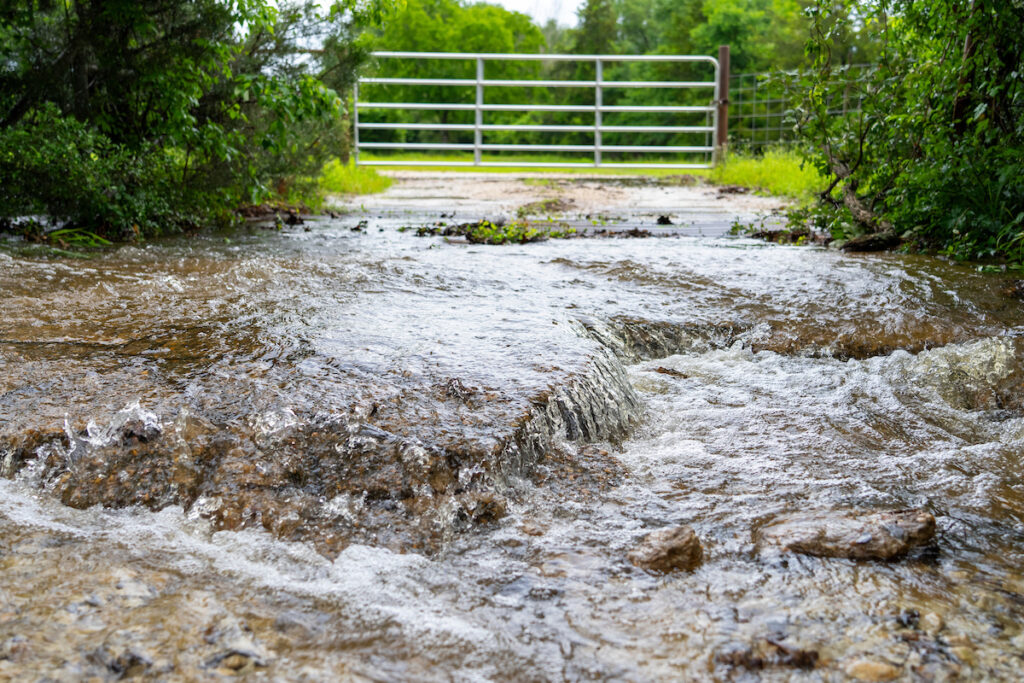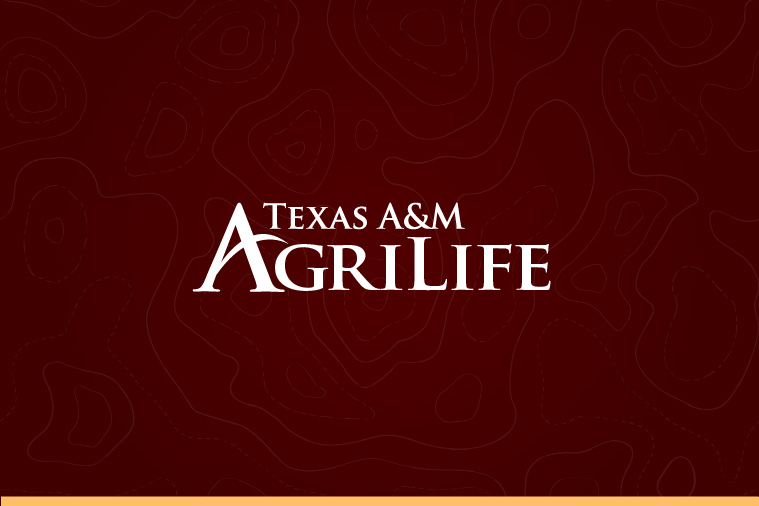Keep livestock safe during hurricane season with an emergency plan
Veterinary expert covers hurricane preparation tips to minimize disease risk
The National Oceanic and Atmospheric Administration has predicted an above-normal hurricane season for 2024. In response, livestock owners should prepare now for the possibility of hurricanes or tropical storms by ensuring essentials are ready and a plan is in place to keep animals safe and healthy.

As part of The Texas A&M University System’s statewide emergency management initiative, Keeping Texas Prepared, the Texas A&M Veterinary Medical Diagnostic Laboratory monitors and responds to animal disease outbreaks, many of which have an increased risk of spread during natural disasters.
Brandon Dominguez, DVM, veterinary services section head of the diagnostic laboratory, said storms create opportunities for the infection and spread of disease in animals because of the weather conditions, high stress and typically low-quality nutrition during this period. He shared insights to keep animals safe and healthy in the possibility of flooding, as well as how to monitor and prevent diseases.
“When it comes to disease outbreaks and natural disasters, preparation can make all the difference,” he said.
Natural disaster risks to livestock
During the onset of hurricanes or other natural disasters, the first risk to animals is structural damage and debris, which can cause physical injuries.
Additionally, Dominguez said high temperatures and humidity following a storm can lead to a surge in disease-transmitting insects like mosquitoes and gnats. These insects can spread viral diseases affecting horses, cattle and other animals.
During heavy flooding, clean water can quickly become scarce, as floodwater may gather chemicals, bacteria and other toxins that make conditions hazardous for animals.
“Severe floodwater can pick up contaminants from stores, homes, garages, sewer overflow and more,” he said. “For coastal regions, water may become brackish and inadvisable for animals to consume.”
Preparation for hurricanes
Ranchers should begin preparations by identifying low-lying or flood-prone areas on their property and locating a place with higher ground where animals can be evacuated.

Dominguez recommends storing enough feed and water to last at least three days or ensuring that clean water will be available even in the case of flooding or power outages.
“Animals might need to be kept at higher ground for a two-to-three-week period as water recedes,” he said. “Ranchers need to have a plan for where to store feed and how to rotate it to keep it fresh. Clean water may not be easily accessible. If you can secure three days’ worth of water, systems are usually in place to help after the initial danger passes.”
Additionally, he said stocking up on livestock insect repellent can help deter flies, mosquitoes and gnats that may spread disease after storms.
Regular vaccinations can also help to protect animals from bacterial infections like clostridium, which spreads more easily during and after flooding.
“There are several vaccines available to protect against pathogens that have an increased risk of spread during or after hurricanes,” Dominguez said. “Keeping animals up to date on their recommended vaccines will offer a lot of protection. Anything you can do to keep animals as healthy as possible beforehand will help them get through a stressful period such as a hurricane.”
Disease monitoring, responding to symptoms
Livestock should be monitored closely for signs of stress and illness and as they transition back to normal conditions.
“After a flood, animals may show clinical signs that they’ve been exposed to contaminated water or feed,” Dominguez said. “Check on animals regularly and reach out to your veterinarian if animals are showing signs of illness.”
Some common symptoms of clostridium and E. coli infections to watch out for include diarrhea, weight loss, low appetite or energy, and fever. The risk of leptospirosis also increases after flooding.
In the aftermath of the flooding, owners should inspect hooves for signs of foot rot or other infections. Dominguez said wet ground creates a suitable environment for bacteria to thrive while softening animals’ skin and hair.
Local veterinarians will be able to treat most hurricane-related animal diseases. In addition, the diagnostic lab helps by testing samples and confirming diagnoses when necessary.
“It’s important to review your emergency plan every year,” Dominguez said. “Even if you don’t need to store much feed or water, it’s crucial to know that your resources are ready.”
For more region-specific guidance and resources, contact local Texas A&M AgriLife Extension Service agents. Find out more about the Texas A&M Veterinary Medical Diagnostic Laboratory’s impact on Texas, or visit the Disaster Assessment and Recovery website for more resources on hurricane preparedness.





